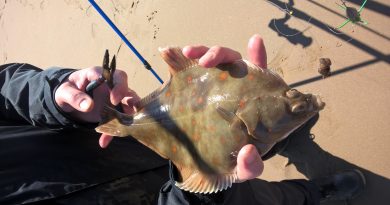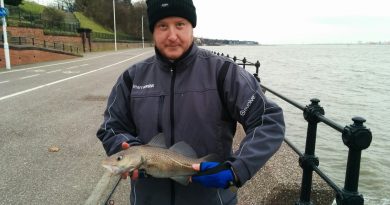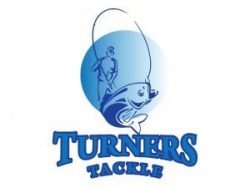Greater Weaver
The Greater Weaver (Trachinus draco), a mysterious inhabitant of the coastal waters around the United Kingdom, is a species that often elicits curiosity due to its unique features and behaviors. With its venomous spines and distinct appearance, the Greater Weaver adds a fascinating dimension to the underwater tapestry. In this article, we will delve into the intricacies of the Greater Weaver, exploring its habitat preferences, prey selection, and the peculiar characteristics that make it an intriguing denizen of UK waters.
Habitat of the Greater Weaver:
**1. Sandy and Muddy Seabeds:
- The Greater Weaver is typically found in areas with sandy and muddy seabeds. Its preference for these substrates is closely tied to its hunting strategy, which involves burying itself in the sediment to lie in wait for unsuspecting prey.
**2. Shallow Coastal Waters:
- These enigmatic fish are commonly encountered in relatively shallow coastal waters. Their presence near the shore makes them accessible to anglers, particularly those engaged in bottom fishing.
**3. Estuarine and Inshore Zones:
- Greater Weavers are known to inhabit estuarine areas and inshore zones where tidal influences create dynamic environments. These zones offer a mix of sandy substrates and varying depths, providing ideal hunting grounds for these predators.
**4. Rocky Reefs and Seaweed Beds:
- While their primary habitat consists of sandy and muddy substrates, Greater Weavers may also venture into areas with rocky reefs and seaweed beds. However, their preference for sandy environments remains prominent.
Prey Preferences of the Greater Weaver:
**1. Small Fish:
- Greater Weavers primarily prey on small fish, including sandeels and other juvenile species. Their hunting strategy involves lying in ambush, partially buried in the sand, waiting for unsuspecting prey to swim within striking distance.
**2. Crustaceans:
- Crustaceans, such as shrimps and small crabs, are also part of the Greater Weaver’s diet. Their ability to snatch these crustaceans with precision contributes to the variety of prey items in their diet.
**3. Invertebrates:
- The diet of Greater Weavers may include various invertebrates, such as worms and small mollusks. Their opportunistic feeding behavior allows them to exploit a diverse range of available food sources.
**4. Ambush Predators:
- Greater Weavers are adept ambush predators. They use their partially buried position in the substrate to remain inconspicuous, and when prey ventures too close, they strike rapidly, injecting venom through their spines to immobilize the catch.
Distinctive Traits of the Greater Weaver:
**1. Venomous Spines:
- One of the most distinctive features of the Greater Weaver is its venomous spines. These spines, located on the dorsal fin, can deliver a potent venom capable of causing pain and discomfort. Care should be taken when handling these fish to avoid injury.
**2. Camouflage and Coloration:
- Greater Weavers exhibit a camouflage coloration that aids in their concealment on sandy and muddy substrates. Their bodies often display shades of brown and green, allowing them to blend seamlessly with their surroundings.
**3. Elaborate Fin Structure:
- The dorsal fin of the Greater Weaver is elongated and possesses distinctive markings. This fin, often raised for defensive purposes, contributes to the overall appearance of the fish.
**4. Territorial Behavior:
- Greater Weavers can exhibit territorial behavior, particularly during the breeding season. The establishment and defense of territories play a role in their reproductive strategies.
Conservation Considerations:
Understanding the habitat preferences, prey choices, and distinctive traits of the Greater Weaver is crucial for its conservation. Anglers and enthusiasts can contribute to the protection of this species by:
- Practicing Gentle Catch-and-Release:
- If Greater Weavers are caught for sport or recreation, anglers should practice gentle catch-and-release to minimize stress on the fish and support sustainable populations.
- Mindful Handling:
- Handling Greater Weavers requires care due to their venomous spines. Anglers should be mindful of this feature to avoid injury and ensure the safety of both the fish and the angler.
- Supporting Habitat Conservation:
- Supporting initiatives focused on the conservation of estuarine and inshore habitats contributes to the overall health of ecosystems where Greater Weavers thrive.
- Educating Others:
- Spreading awareness about the unique characteristics and behaviors of the Greater Weaver fosters a greater understanding and appreciation for this species. Educating others promotes responsible angling practices and conservation efforts.
Conclusion:
The Greater Weaver, with its venomous spines and distinctive hunting strategy, stands as a captivating presence in the coastal waters of the United Kingdom. By exploring its habitat preferences, prey selection, and unique traits, anglers and enthusiasts gain a deeper appreciation for this enigmatic fish. As we navigate the waters in pursuit of diverse marine life, let us embrace responsible angling practices and conservation efforts to ensure the continued presence of the intriguing Greater Weaver in UK waters.



